Sustainability/Green
Could a Citroën ë-Jumpy Hydrogen be Feasible in Australia?
Currently (July 2022) in Australia, hydrogen refuelling stations are found in Melbourne, Sydney, and Brisbane. Green hydrogen (H2) is a cleaner fuel for running a motor to power a vehicle. H2 is produced using electricity that has been made from renewable resources (sun, wind, hydro) and is one effective way to aid the reduction of unwanted gas emissions. Hydrogen is also the simplest and most abundant chemical element in nature that is almost always bound to another element. It can be used as a clean and inexhaustible energy. You can even create a hybrid vehicle where hydrogen and batteries can combine to propel a hydrogen-ev forwards.

Citroen have created a great light commercial van called the Citroën ë-Jumpy Hydrogen. While it is currently only sold in a few markets in Europe (where there are many more hydrogen refuelling stations), the light commercial van combines the best technologies of a hydrogen fuel cell and a battery for motoring. Perhaps we might be able to get an ë-Jumpy Hydrogen van in Australia to run the Melbourne to Brisbane Hydrogen Highway?
Citroën’s entire light commercial vehicle (LCV) range is already fully electrified overseas, and Citroen say that the ë-Jumpy Hydrogen offers the widest electrified range to meet the heavy demands of business professionals. Citroen Australia is yet to bring any of these ev vans to Australia.
The Citroen ë-Jumpy Hydrogen van has a hydrogen fuel cell and rechargeable batteries, the first Citroën powered by this form of energy. While accommodating this new hydrogen/electric technology, it still manages to retain the practical volume and load carrying capacity. The hydrogen and electric components are integrated into the van’s ingenious design, ensuring that the componentry sizes have no impact on load capacity.

Citroën ë-Jumpy Hydrogen LCV has a range of over 400 km. The three 700 bar carbon-fibre hydrogen tanks are stored on the horizontal below the load floor, which sit next to the battery under the front seats. These hydrogen tanks can be filled in just three minutes!
So how does it all work? The Citroën ë-Jumpy Hydrogen LCV is a fully electric vehicle and benefits from a 45 kW fuel cell that produces electricity by consuming hydrogen. A 10.5 kWh battery takes over automatically once the hydrogen tank is empty. The battery itself is automatically charged using electricity that is generated by consuming hydrogen or by using a cable at any typical electric-vehicle charging station.
The Citroen ë-Jumpy Hydrogen has identical specifications to the Peugeot e-Expert Hydrogen and Opel Vivaro-e Hydrogen vans in the UK. Citroen say that the ë-Jumpy Hydrogen LCV is for businesses that need more than the standard EV van’s 300 km of driving range, or for those who have no time to wait around recharging before getting to the next job. The Citroën ë-Jumpy Hydrogen is expected to offer over 400 km (249 miles) of driving range.
Citroen say that Battery Electric Vehicles (BEVs or EVs) are perfect for all applications with range requirements of 100-300 km a day if there is access to overnight charging. But with the improvements in battery technology leaping forward, time is currently on the side of BEVs/EVs.
Citroën ë-Jumpy Hydrogen specs include:
a total range of over 400 km
3-minute refuelling of the hydrogen tanks
three 700-bar hydrogen tanks (70 MPa), with 4.4 kg of hydrogen under the floor when at full capacity
range with 10.5 kWh battery only being used: 50 km
front-wheel drive
100 kW of power and 260 Nm of torque developed from the permanent magnet electric motor
an 11 kW three-phase on-board charger
2 van lengths available (Medium 4.95 m long, and XL 5.30 m), with the same loading volume characteristics as any equivalent diesel or purely electric versions
cargo space of 5.3 m3 to 6.1 m3
payload up to 1100 kg
towing up to 1000 kg
Becoming Greener, Saving Money, and Other Ways to Get About

It’s always a prudent idea to have a little bit of cash tucked away for a rainy day. As much as we like to drive, there are some other ways of getting to work or the shops, especially if you’re one who lives in a city or town, which will probably be most of us.
“I wish I had a little more cash in the bank!” is a phrase that’s been around since Noah, and I guess he too might have looked at getting a higher paid job to cope with the rising costs of timber, building materials, fuel, and other important goods and services. For some of us, the reality is that our current job is pretty good, anyway. So, what are some things we can do when we feel we need to be saving a little more money for other things (e.g., that weekend away to Fiji or paying for that school sports trip to NZ that one of the kids has to go on)?
Getting from A to B every day of the week does draw down on any spare cash, and once you’ve made the switch to a smaller car, a hybrid or – lucky for some – even a new EV, you are left scratching around for other options to cut costs. Is there anything else that can be done then to reduce our fuel, EV power bill, and our carbon footprint?
On sunny days – and we have a few of those in Australia – why not take the bike instead of taking the car? If your work premises is under 30 minutes away by bike, then cycling is a great way to keep yourself fit, also ensuring that the times when you do dust off the car to take it out for a spin become even more fun and rewarding.
Using your car less and biking or walking more is going to be good for keeping your body in shape. Now that’s a great incentive if you’re on the lookout for someone special or even if just maintaining the special relationship you do have. How cool is that, maintaining your sexiness and letting more cash build up in the bank for that holiday away or “Johnny’s or Jenny’s” school sports trip. Of course, if you have to take half a dozen kids to school, take a load of gear or a trailer, or if it’s simply pouring with rain, then you’re probably going to want to stick with your car for transport. However, shorter distances can also be walked – even with a brolly in the pouring rain!

Governments, town planners, and urban designers are all trying making it easier for cyclists to be able to bike safely, pedestrians to go walk about, all while working towards cleaning up the air quality of our urban environments – particularly the congested city environment. I do love a ride on the pushbike. The wind in the hair, the sun on the back, and the blood pumping through the veins feels great.
But what about the bus or train? Does your public transport system provide a better alternative to your vehicle’s thirsty internal combustion engine? If you can find a public transport route that takes you within half a kilometre of your work, why not use public transport and walk the remainder? You’ll get to stretch your legs before arriving at your office, and this will help your work productivity – especially first thing in the morning. Buses are usually comfortable enough in Australia, while the train is also available in many of our main centres.
I guess if it’s time for getting the groceries, the bus or train might not be a practical option; it is hard work carrying all those shopping bags full of milk and eggs. The grocery run is definitely easier to do by car. Doing the groceries weekly or even fortnightly rather than less frequently saves you petrol money and also grocery money – it’s a fact! Flip the coin, and I suppose lots of little shopping trips everyday by bus or train could also get the groceries done.
But is everyday shopping practical or relaxing? Maybe not for busy Mums and Dads, or workaholics, but it is probably more attractive for older people who haven’t quite the same work and family commitments.
Of course, there will be a number of you smirking as you read this because your work office is at home. Yes, I agree, that’s a pretty cool set up! Rolling out of bed in the morning and into your office chair sounds like a great way to get to work. Still, there are ways, I’m sure, that you could reduce the level of car trips you do in a week, especially if you needed to save a few extra dollars for various reasons.

Still not convinced that you can give up the car entirely? Actually, it is pretty hard in this day and age to go carless. All of us need to be able to get out of town and see the countryside from time to time – it’s healthy and the Doctors would agree! However, there is another phenomenon known as carpooling. You could carpool with the people at your work. Single-occupant vehicles (i.e., one person in one car) are frowned on by town planners, environmentalists, and traffic engineers, so if you can share the ride with someone else via a carpool system, you will be impressing these types. You will also get to save money, and you can relax a little, feeling a bit better about how you’re helping to reduce traffic congestion, your own carbon footprint, and the urban air pollution.
Of course, if you love cars, then you are going to want to drive yourself everywhere. Best save up and buy a hybrid or EV, then!

Let’s Torque ICE and EV Physics

As technology improves with each passing year, the inside mechanicals of an internal combustion engine (ICE) have become more refined, stronger, lighter, and more efficient at harnessing power from the combustion process and feeding it out to the wheels. Adding Hybrid technology to the ICE has also enabled car manufacturers to make greater gains in power and efficiency. Hybrid engines are designed to try and use electric power from the electric motor(s) instead of fossil fuel power from the ICE for as much of the commute as possible. When required, the ICE takes over the power delivery when electric power has been drained, or electric and ICE can work together for enhanced power on acceleration. Purely electric vehicles (EVs) don’t have combustion energy but can still produce phenomenal levels of power and torque.
If you’ve ever taken the slightest look at any car review in a magazine or online, or even browsed through a car brochure, somewhere in the read you’ll come across some of the main bits on the engine stats and specs. Some of the specs are easy enough to understand – like the 0–100 km/h time measured in seconds, which is a measurement of the quickest time it takes the car to go from a standstill to 100 km/h. 100 km/h is equivalent to 62.14 mph, so if you are presented with an Imperial measurement looking at the 0–60 mph sprint (USA reviewers use this), it’s roughly the same as the usual nought-to-the-ton metric figure.
However, some specs are a bit harder to get a handle on – like power output. Power is described as the rate at which work is done, or else the rate at which energy is converted into motion. In cars and vehicles of all types, the formula for calculating power is relatively complicated (or kind of). The power output of an engine is measured in kW (kilowatts) using metrics, which is the force times the velocity: power = work/time = (force x distance)/time.
All sorts of things go into delivering the power and torque created from an ICE out to the road, such as the number of cams (pistons) in the engine, the number of combustion chambers in the engine, the flywheels, the gear set, the tyres, and even the size of the combustion chambers. The reason why EVs can make power and torque quickly and efficiently is that they do away with all the internal mechanical workings of an ICE (the ICE motor) and use magnetism instead of combustion for making power and torque available to the driveline.
Yes, power actually used to be measured in horsepower, which was originally used to compare how well a steam engine or traction engine could work in comparison to a big Clydesdale horse (hp). Here’s some stats for you:
1 kW equals 1.34 hp
1 kW equals 737.56 foot pounds per second
1 hp = 550 foot-pounds per second (ft lb/s)
1 hp = 0.75 kW
As you may already know, power is closely related to torque. Torque is a measure of the force that can cause an object to rotate about its axis point. The whole set-up with a vehicle’s engine, transmission, and drivetrain involves rotational motion, so where the rubber finally hits the road is where the final delivery of the torque from the vehicle’s engine and mechanical components are then converted back to straight-line motion, where and when the rubber applies a force to the road.
Torque is measured in Newton meters (Nm). Newton metres are the metric units used for torque. The non-metric unit used for American cars is in pound-force per feet, also known as pound-feet. Just to be confusing, pound-feet is also used for torque, while foot-pounds are used for power, something that’s likely to drive you half dotty. However, the formula for conversion is 1 pound-foot = 1.356 Nm.
An ICE engine loses a lot of its initial combustion power and torque as this gets delivered mechanically to the rubber on the road, where all the action happens. All the weight and friction of the moving ICE powerplant components drain the power and torque levels before what’s left of it is delivered to the wheels, the rubber on the road used for motion.
Hybrid vehicles (those that combine electric and ICE motors) can use electric motors to boost ICE power and torque output, thus improving fuel efficiency and power and torque delivery. EVs can deliver so much more power and torque to the rubber on the road because they haven’t got all the extra weight and friction of the ICE’s mechanical componentry. EV motors don’t need all of this to create a big enough force for motion.
Fuel Miser Comparison (2010/2022) Smart-VW

I thought I’d look at a list of cars that featured in an article written back in 2010, where I compared some of the thriftiest cars at that time. These were cars which had been designed to function as some of the world’s best fuel sippers. These vehicles were sold new in Australia, but I thought I’d add a new twist this time by adding what we can consider as the brand new version of these old models with their statistics for fuel consumption as a comparison – you know, a bit of nostalgia along with the new, and what’s changed – or not.
Note that the fuel consumption figures are based on the number of litres of fuel consumed every 100 km travelled. Often real world situations can play havoc with Lab tested fuel consumption figures, but this definitely gives you an interesting picture And, here is the list that is in alphabetical order – just to be helpful:
Smart
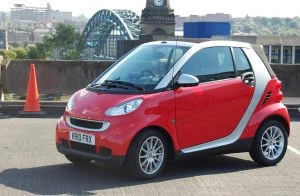
2010 Smart ForTwo
By far the smallest car being talked about in 2010 with excellent fuel consumption was the Smart ForTwo. It still fits into car parks like you wouldn’t believe! Small and safe, comfortable and peppy, any smart CBD commuter would be tempted by the tiny Smart ForTwo. It boasts a combined fuel economy figure that sits well under 5 litres/100 km – and this all coming from a ULP motor. Currently you can’t buy any new Smart car in Australia, though I’ve heard that, in the near future, they are making a comeback with purely electric power and with new design.
SsangYong
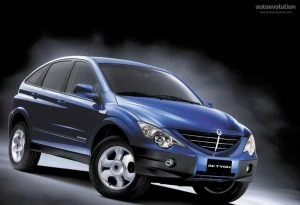
2010 SsangYong Actyon SUV
At the time, the 2010 SsangYong Actyon was about the most frugal SUV you could buy new at an impressively low price. The economic SUV has muscly looks and a rugged design that could see the vehicle handling tough off-road terrain with ease. SsangYong uses a 2.0 litre turbo-diesel engine in this vehicle, which packs over 300 Nm of torque to go with its excellent 4×4 underpinnings. Getting any 1.8 tonne vehicle to manage under 5 litres/100 km is a feat. So, well done to SsangYong! Currently, no more SsangYong vehicles quite match the excellent economy of an Actyon Diesel.
Suzuki
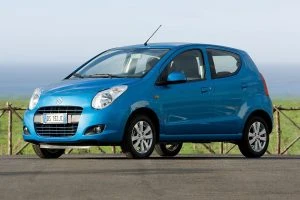
2010 Suzuki Alto
Budget priced, and one of the few petrol powered cars back in 2010 delivering awesome fuel economy was the Suzuki Alto. The Suzuki Alto 1.0 litre GL and GLX has an attainable fuel economy figure of 4.8 litres/100 km. The Suzuki Alto is also nice looking (bug-eyed), has six airbags, and even comes with ESP as standard in the GLX model. Great for around town – you’d be nuts to not consider an Alto.
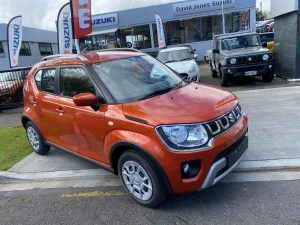
2022 Suzuki Ignis
There are no new Altos in 2022, but Suzuki do offer us the awesome little Suzuki Ignis GL Manual and GLX auto. These cars use a 1.2-litre ULP motor and deliver a similar fuel consumption to the 2010 Alto. Safety in new Suzuki cars has taken a big leap forward, so too has all the modern technology. Brand new Swift and Baleno models are definitely worth a look. These are also economy-driven cars with decent comfort, technology, and practicality.
Toyota
Where would the world be without Toyota? For a very frugal, spacious, and practical drive, the clean burning 2010 Toyota Prius III offered a 1.8 litre petrol hybrid engine. It didn’t come cheap, but it was certainly friendly on the environment. You could expect around 4.0 litres/ 100 km – sometimes better.
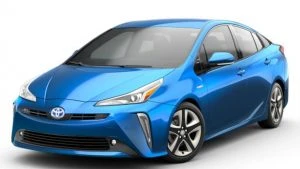
2022 Toyota Prius
You can now buy a 2022 Toyota Prius model for between $42–50k. These are nice cars and much more impressive to look at than the older models. They are safe and packed with excellent features. The Prius still continues with the same petrol-electric engineering that made it such a standout when it was launched in 2001. The same basic technology remains for the 4th-generation Prius, as well as all Toyota/Lexus hybrids these days. So, what a new Prius offers is a small-capacity 4-cylinder engine that works through a planetary gear set to dispense the delivery of power to the front wheels (or also the rear wheels in SUV variants). The current Toyota Prius is powered by a 72kW/142Nm 1.8-litre engine that combines with an electric motor to produce a joint maximum power output of 90kW and a claimed fuel consumption of 3.4 litres/100km. Better than ever! Toyota newest vehicles: the CH-R, Camry, Corolla, RAV-4, and Yaris Hybrid models are available with very low fuel consumption figures. Toyota and Honda are masters of the Hybrid-game, and have been for quite some time.
VW
Back in 2010, the Germans offered plenty of cars with excellent fuel consumption. Volkswagen has for a long time offered well-designed, reliable and fuel efficient motorcars. They are generally refined, elegant, and roomy, and the 2010 VW Golf 77TDI variant easily boasts fuel economy figures below 5 litres/100 km on a combined cycle.
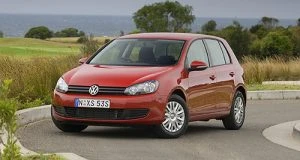
2010 VW 77TDI
2022 sees the Golf Hatch with 5 models, and in Wagon form it has a couple of nice new variants. The base models use a 110TSI 1.4-litre ULP motor, which is a 4-cylinder that is smooth and can return a claimed 5.8 litres/100 km. 250 Nm of torque offers muscle when you need it, and the car cruises at high speed effortlessly. The 8th-generation of the Golf brings not only fresh external and interior design, but it is also the safest, most tech-laden ever.
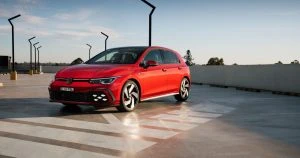
2022 VW Golf 110TSI
There are other new cars right across the auto-manufacturing spectrum now that offer superb fuel economy or EV power alone. It’s interesting how in that time (2010–2022) we’ve seen auto manufacturers taking a shift away from providing the new-car buyer with several frugal diesel family options to a fleet that is now a lot more Hybrid in flavour. It’s a change coerced by new government law and regulation. However, hybrid vehicles are superb automobiles that offer top fuel consumption figures and practicality, creating that much needed bridge between purely fossil fuel vehicles and completely EV-powered automobiles
Do check out the brand new arrivals. Cars like the Hyundai IONIC, Hyundai KONA, Kia EV6, Kia Niro, Mazda MX-30, BMW i and Hybrid models, Mercedes Benz EQA and EQC models, MG HS EV, Polestar cars, Tesla, and Volvo’s Recharge and Hybrid models are just some of the amazing new cars available that we can now buy that weren’t even a showing back in 2010.
Happy commuting!